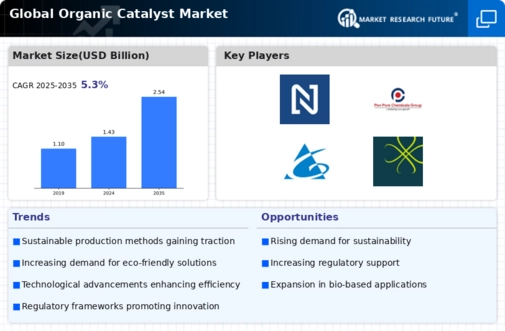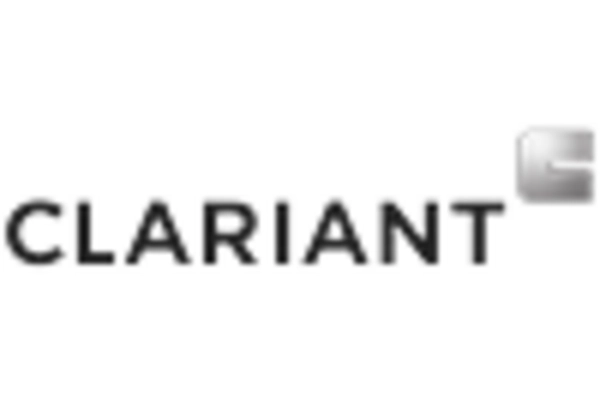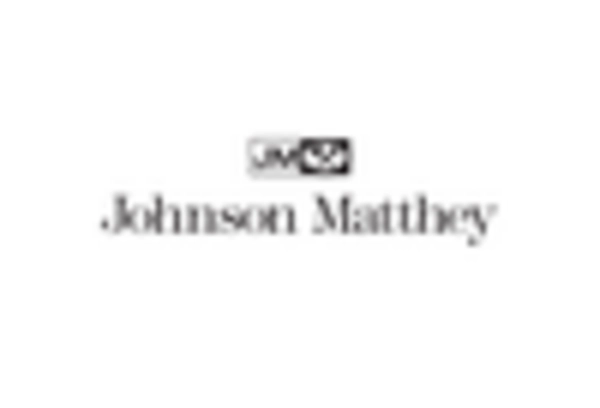Market Growth Projections
The Global Organic Catalyst Market Industry is projected to experience substantial growth over the coming years. With a market value expected to reach 1.43 USD Billion in 2024 and 2.54 USD Billion by 2035, the industry is on a promising trajectory. The compound annual growth rate of 5.35% from 2025 to 2035 indicates a robust expansion driven by various factors, including technological advancements, regulatory support, and increasing demand for sustainable solutions. This growth is indicative of the evolving landscape of catalysis, where organic catalysts are becoming increasingly integral to industrial processes across multiple sectors.
Regulatory Support for Green Chemistry
Regulatory frameworks promoting green chemistry are increasingly influencing the Global Organic Catalyst Market Industry. Governments worldwide are implementing policies that encourage the use of organic catalysts in chemical processes, thereby reducing environmental impact. For instance, initiatives aimed at minimizing hazardous waste and emissions are steering industries towards adopting organic catalysts. This regulatory support not only fosters innovation but also enhances market growth. The anticipated compound annual growth rate of 5.35% from 2025 to 2035 underscores the positive impact of these regulations on the market, as companies align their practices with sustainable standards.
Growing Applications in Pharmaceuticals
The pharmaceutical sector is a significant driver of the Global Organic Catalyst Market Industry, as organic catalysts are increasingly utilized in drug synthesis and development. Their ability to facilitate complex reactions with high selectivity and efficiency makes them invaluable in producing active pharmaceutical ingredients. The rising demand for innovative therapies and personalized medicine is further propelling the adoption of organic catalysts in this sector. As pharmaceutical companies seek to enhance production processes and reduce costs, the market for organic catalysts is expected to flourish, contributing to the overall growth of the industry.
Technological Advancements in Catalysis
Technological advancements play a pivotal role in shaping the Global Organic Catalyst Market Industry. Innovations in catalyst design and synthesis are enhancing the efficiency and effectiveness of organic catalysts. For example, the development of new catalytic processes allows for lower energy consumption and improved reaction rates. These advancements not only optimize production but also contribute to cost savings for manufacturers. As a result, the market is expected to grow significantly, with a projected value of 2.54 USD Billion by 2035. This growth is indicative of the ongoing evolution in catalysis technology, which is likely to drive further adoption of organic catalysts across various industries.
Rising Awareness of Environmental Impact
There is a growing awareness of the environmental impact of industrial processes, which is driving the Global Organic Catalyst Market Industry. Stakeholders across various sectors are recognizing the need to adopt greener alternatives to traditional catalysts. This shift is motivated by both consumer preferences for sustainable products and the increasing pressure from regulatory bodies to minimize environmental footprints. As a result, industries are turning to organic catalysts, which offer reduced toxicity and lower emissions. This heightened awareness is likely to sustain market growth, as companies prioritize sustainable practices in their operations.
Increasing Demand for Sustainable Solutions
The Global Organic Catalyst Market Industry experiences a notable surge in demand for sustainable solutions across various sectors. Industries are increasingly adopting organic catalysts due to their environmentally friendly properties, which align with global sustainability goals. For instance, the chemical sector is shifting towards greener processes, utilizing organic catalysts to reduce harmful emissions. This trend is reflected in the projected market value of 1.43 USD Billion in 2024, indicating a robust growth trajectory. As companies strive to meet regulatory standards and consumer preferences for eco-friendly products, the Global Organic Catalyst Market Industry is poised for substantial expansion.


















Leave a Comment